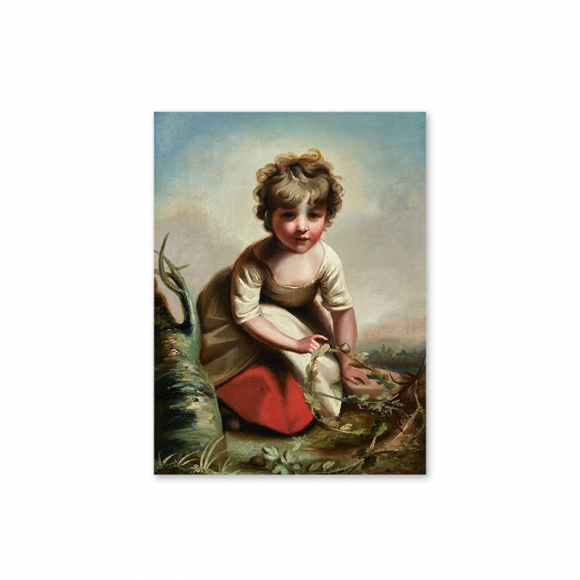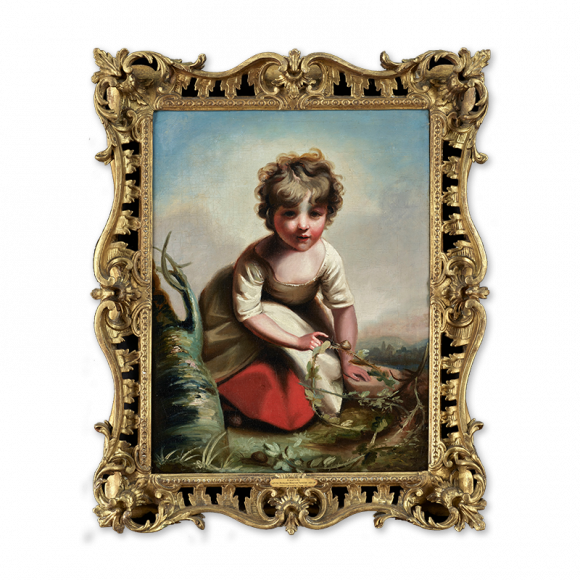Frame : A fine carved and pierced giltwood frame from the late 18th century.
Engraved : John Young, published by W. Smith 1787
Richard Morton Paye was a multi-talented British artist working at the end of the 18th century. Born in Kent, his first artistic endeavours were in the field of metal-chasing; he then trained as an engraver and also as a modeller in wax. At the same time he studied the art of oil painting. His early exhibits at the Royal Academy, The Society of Artists and at the Free Society were portraits, however he soon became better known for his genre pictures of children engaged in various pursuits. These were the kind of picture much in vogue towards the end of the 18th century, which eventually became known as ‘fancy pictures’ (effectively pictures of ‘fancy’ or whimsical imagination). Many of these pictures were engraved, some by established engravers, some by the artist himself. However, towards the end of his life Paye suffered from ill health and painting became difficult for him. Little is known of his work between 1800 and his death in 1820.
This present picture - again unsigned - can be securely identified from the mezzotint by John Young published in London in 1787. In this painting we see a young girl experiencing the workings of nature at first hand, pointing to a snail slowly working its way along a bramble branch. Paye’s title ‘Sensibility’ references a term much in vogue at the time. It described the disposition of those sensitive to the natural world around them and to the emotional concerns of other people. By the early 19th century however it had somewhat run its course, and criticisms of the cult of sensibility were emerging. Jane Austen’s Sense and Sensibility (1811) famously opposed such an excess of sentiment and feeling with the solid values of common sense.
Paye’s ability to handle pronounced suggestions of light and shade is striking in ‘Sensibility’. Indeed the strong chiaroscuro of his pictures made them natural candidates for the engraver – particularly the engraver in mezzotint. It is safe to assume that Paye was probably influenced by study of the Dutch Old Masters or, closer to home, the work of Joseph Wright of Derby.
Despite his considerable artistic activity, Paye remains slightly elusive. He rarely signed his work and it is thought that many people have confused his unusual name ‘Paye’ with the name ‘Page’. Further, his latter years of ill-health clearly left him unable to promote himself. Yet engravings after his work show him to have painted some fine pictures and today’s technology is now allowing these engraved images to be more easily accessed. It is hoped that through these prints, more of his work can be identified.




